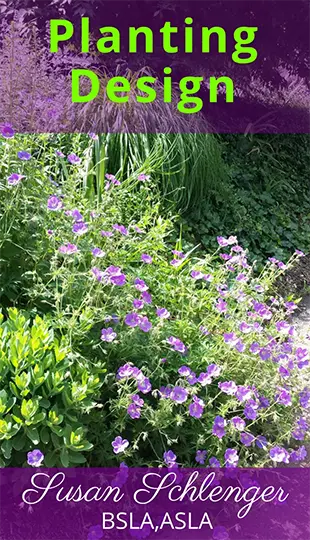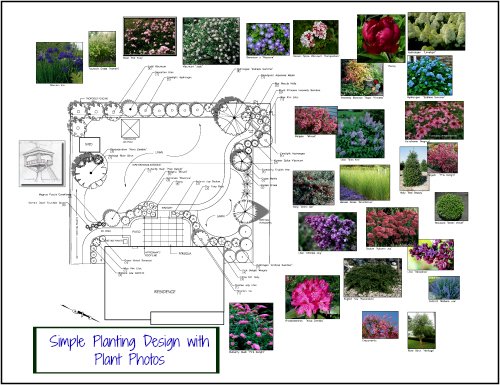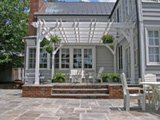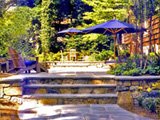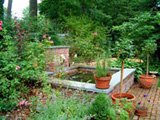Travertine Pavers
A Great Paving Material
Travertine pavers are a natural material. They are real stone and are
available in various patterns and colors. Travertine is found in many
different parts of the world, from Rome to Peru and even Yellowstone
Park. It is formed by geological processes.
Basically here is how travertine is formed. Springs deposit limestone.
Water travels over these deposits. The dissolved matter creates thin
layers of calcite and aragonite, which are forms of calcium carbonate.
These mineral layers build up into deposits of what is known as
travertine. Travertine also makes up cave formations.
The most important thing, along with pricing, is to make sure you are getting high quality.
Advantages of Travertine Pavers
Travertine pavers are cut from natural stone. Natural stone paving materials have a special look, very different from man made materials.
It is one of the best materials for pool paving.
One of the best features is that it stays cool underfoot in hot conditions.When you walk barefoot, as usually is the case in a pool area, they will not be hot on your feet. Materials such as pavers, bluestone, and brick do get very hot.
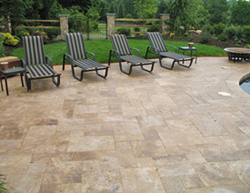
There is no efflorescence.
Efflorescence is a discoloration. It is a white deposit, that sometimes occurs on the surface of concrete, often just after the concrete is done. This is typical of bricks laid in concrete.
Matching or coordinating pool coping is often available. The copings come in different widths depending on which manufacturer it comes from.
If the pool is curvilinear, a more narrow coping, such as 6", is a good choice.
Wider copings can be selected for more geometric shaped pools, since they can be easily laid in straight lines and very few will need to be cut.
That is not to say that wider copings cannot be used on curvilinear pools. A coping that is a wider one, such as 18", can be used for free form swimming pools, but there will be more cutting of the pieces to fit the shape of the pool, and thus it will be more time consuming for the contractor.
Once again, depending on the manufacturer, available coping widths will vary. However, some typical sizes are 6", 12", 18" and 24".
Most travertine paver colors have matching bullnose coping. In addition, colors can be easily coordinated for a very nice look. Use one color, for example, for your swimming pool decking and a coordinating color for the pool coping.
Other Pages on Travertine:
Pictures of Travertine Pavers - Look at some beautiful travertine project pictures and ideas.
Travertine Stone - understand the differences between travertine stone types, such as honed, filled and tumbled travertine.
Travertine Sealer - read about if you should use a sealer and if so, which to choose.
How To Install Travertine - Methods given for both travertine pavers and travertine tile.
Travertine Grout Types - which type of travertine grout should you use in the joints?
Sealing and Installation Q&A - Other visitors questions and lots of answers regarding travertine
Polymeric Sand
- Here is some insightful information on using polymeric sand or stone
dust as fillers for travertine joints and holes. One mason says there is
no need to use either when you have good quality travertine pavers!
Compare Bluestone Pavers with Travertine Pavers - two good pool paving options
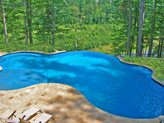
Find out what the travertine pavers cost for this project. I provide the costs per square foot along with the total paving sf. You will also discover what it would have cost in pavers, concrete or bluestone!
Also visit my page on swimming pool decking.
To understand the differences between travertine stone types, such as honed, filled and tumbled travertine, visit my page Travertine Stone for an explanation, along with the pros and cons of them all.
Travertine pavers have a natural non-skid surface. Traction actually increases when wet. This is another great feature and reason to use them around a swimming pool.
Installation methods is the same as for concrete pavers, which is dry laid. There is no need to set them in concrete, except for the pool coping, which must be mortared. They come in different sizes and are completely "square". This means that unlike bluestone, all the edges are straight and there is no need for cutting to get straight joints. See these Q&A between myself and a mason regarding polymeric sand.
Qualified paver contractors who lay concrete pavers should have no problem laying travertine pavers.
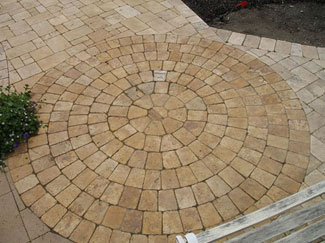
The stone color always looks great since the color is retained.
They will not fade, for example, as concrete pavers can. In addition, they won't scuff or degrade like man-made surfaces.
They are also nice when used for walkways, patios, or even driveway edgings.
Travertine pavers are also freeze-thaw compatible which
means they can withstand conditions of freezing temperatures.
They will
not crack due to the ground freezing and thawing. They also withstand
weathering over time.
You can purchase matching travertine tile for other hardscape elements,
such as retaining walls or outdoor kitchens. For example, a matching or
coordinating tile can be used for the facing on a retaining wall or the
outdoor kitchen counter top. The material and colors can be the same,
and yet different sizes can provide interest. Alternatively, you can use
different colors that look well together.
Travertine tile, when used as a paving material, is thinner than the pavers and is normally set in mortar. That is why travertine stone pavers are a better choice for an outdoor paving material.
Pavers are stronger and can be dry laid. In addition, any material set in mortar is more expensive.
The cost of the pavers is neither the most or least expensive paving choice. The cost falls between dry laid brick and dry laid bluestone. (Concrete pavers are less expensive than brick.) Visit my page on paving costs.
The natural beauty of travertine pavers is enhanced and extended with the use of a travertine sealer, which prevents stains from penetrating into the stone. Sealing also brings out the travertine colors.
Designing With Travertine Pavers
Travertine paver companies import the stone from various countries, such as Turkey, Italy and Peru. Many different colors are offered, such as:
- Beige - a nice neutral color.
- Carmel - rich camel with tans, soft
- Gray - shades of light, medium and/or dark grays
- Blends - blended mixture, ie., light carmel color with some gray tones
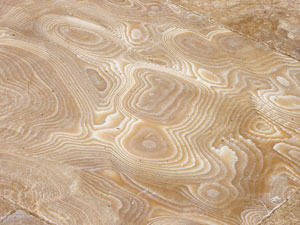
The beauty of travertine, is that it is a natural stone. Therefore, whatever color you choose will have other similar colors running through it. They are all quite stunning!
This is a sample of a striking travertine stone.
It is even more beautiful when you actually see it in person.
The pattern is not common, which makes it all the more dramatic as it mixes in with the others.
The travertine paver here is just one of many in an assortment. The other stones are different and mixes of lights and darks.
- There are many sizes and patterns available. You might use all
one size, or mix different sizes for a random look. You can also buy the
pavers as a pattern, where the company will ship the correct ratios to
make up the design.
- As an example, a pattern might be made up of stones which are
16"x24", 16"x16", 8"x16", 8"x8". Any of these sizes can be bought
separately also.
- For larger areas, patterns with sizes as mentioned above look
great; patio paving and swimming pool decking usually encompass a fairly
large area of hardscape.
- For smaller patios and walkway designs, a pattern made up of the smaller sizes works best.
Travertine Paver Costs
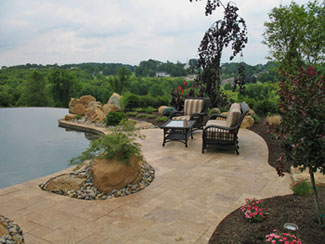
Many pavers are shipped in crates. A particular pattern may have a different amount of square footage compared to another.
How does this affect travertine paver costs?
Once you have determined the square footage of your hardscape area, you will know how much square footage of the travertine pavers to buy.
Depending on what pattern you select, this can greatly affect the price.
Here is an example:
- You determine that your patio has 450 square feet.
- Let's assume the pattern you select has 192 sf per crate.
- You would need 3 x 192 = 576 sf.
- A different pattern (or individual sized paver) might have 162 sf per crate.
- You would need 3 x 162 = 486 sf.
- They are both the same price per square foot, but as you can see,
one paver size or pattern will cost much more, since you are paying for
full crates.
*Photos taken from various sources.
If you enjoyed this page, please share it!

Landscape Design Awards
Superior Excellence
Naturalistic Pool Award
Superior Excellence
Planting Design Award
Certificate of Merit
Formal Garden Award
Popular Pages
